ADVANCING BASIC EDUCATION IN THE PHILIPPINES (ABC+)
Mid-term Performance Evaluation Report
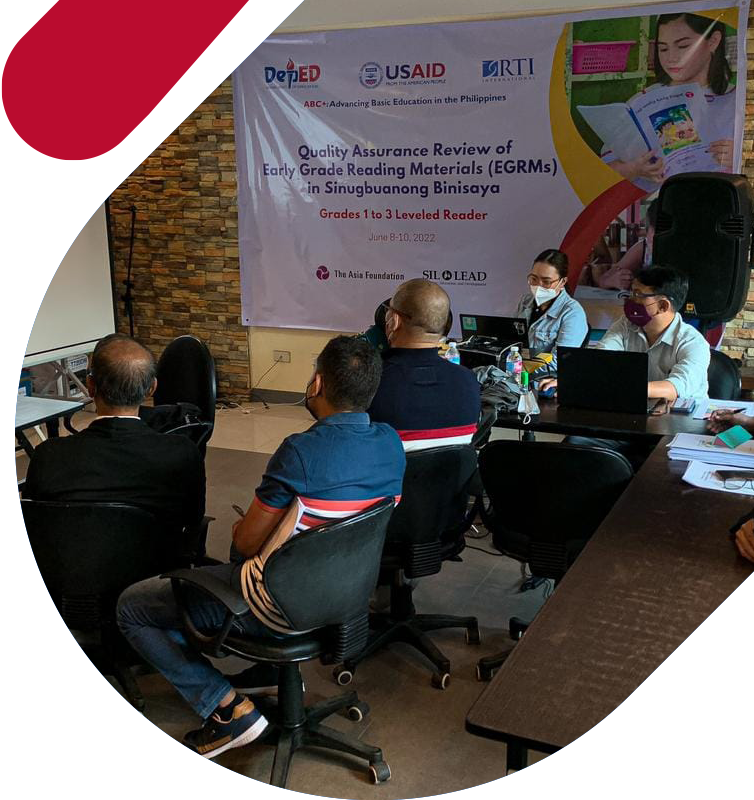
EFFECTIVENESS
To what extent did ABC+ achieve its outputs and outcomes in the three IRs on improved early-grade instruction and delivery, improved access to quality materials, and improved education capacity and commitment to manage and implement interventions supporting early-grade instruction?
Answering this question required assessing whether ABC+ produced the intended outputs and outcomes. The main unit of analysis measures achievement, underachievement, or overachievement in the three IRs.
Table 2, which depicts ABC+’s sub-IRs for IR1, shows that only six out of thirteen key performance indicators (KPIs) were completed under IR 1.1. These were mostly on capacity building of teachers, school heads, and faculty from teacher education institutions.
There is an overachievement for one KPI for IR1.2. The overachievements in some of the KPIs in IR.11 and one KPI in IR1.2 were connected to pivots to virtual training, which reached more than the expected number of teachers and school heads. Many teachers were reached and the training approach during the pandemic was effective, as reflected in Annex 13-Table 21, where 94.2 percent of the participant ratings indicated that ABC+ contributed to their instructional practices. However, the effectiveness of ABC+’s professional development programs cannot be measured because classroom observations to assess teachers’ application of skills have not started yet. Thus, there is no data to confirm whether the intended outcome of teachers delivering quality instruction is consistent with the training and materials received. If classroom observations are not happening soon, teachers might forget what was taught to them. The time component of teaching, where learners and students interact, is essential to achieve the learning outcomes of improved early-grade instruction.
The outcomes for sub-IRs 1.3 and 1.4 (related to math instruction and differentiated instruction, respectively) will be needed until year three of the program to mature. However, preparatory activities such as pilot and evaluation of innovations in mathematics are already achieved but still need to be adapted for broader application. The numeracy support program was only recently implemented, and results to date are moderate. According to the course leader on numeracy, several teacher training courses have been conducted and, in Program Year 3 (PY3), there will be a collaborative development of numeracy lessons and implementation for students or teachers. Although it is a pilot model for numeracy instruction, it is hoped that their effort will gain traction as the program matures.
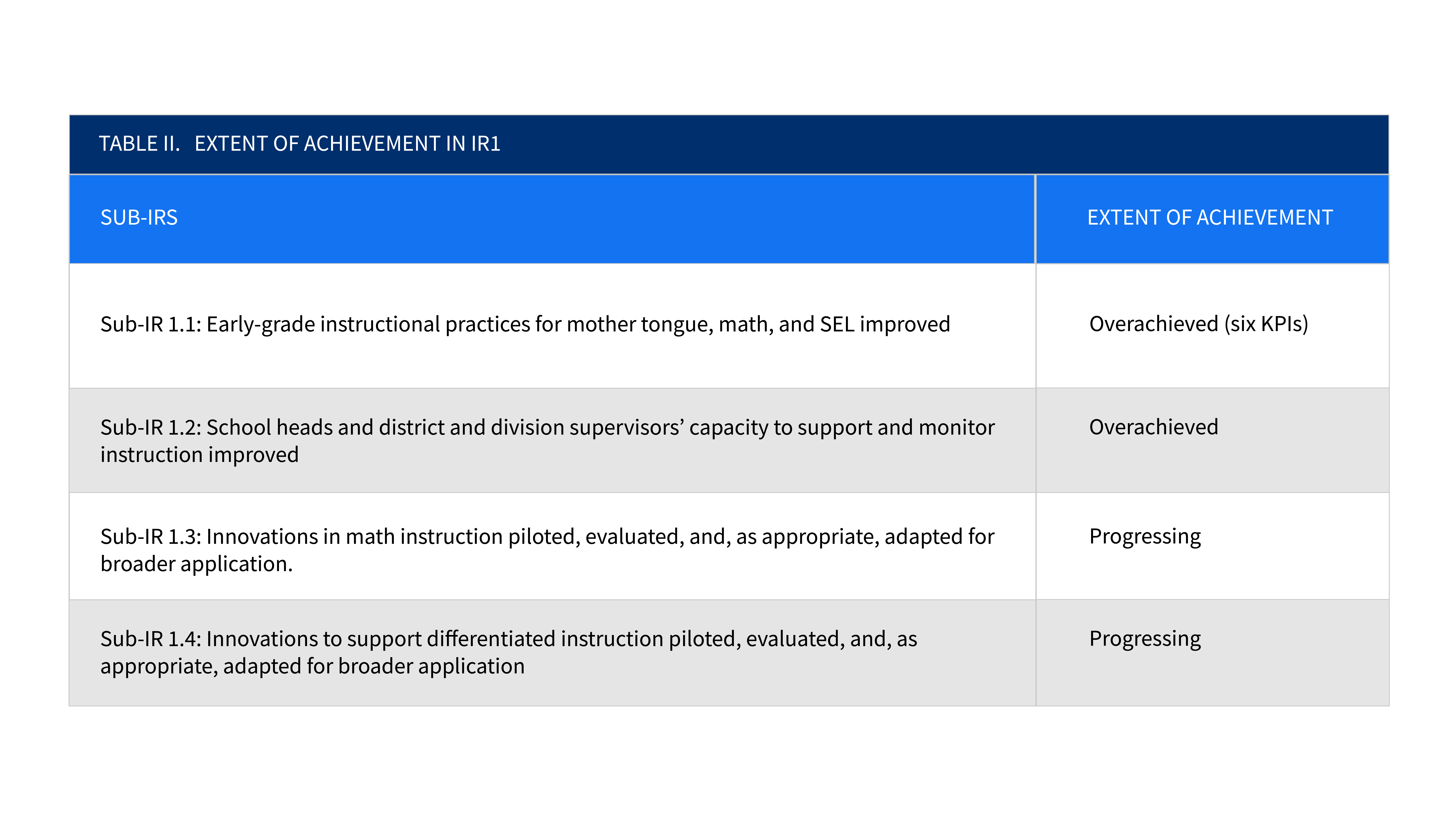
There is overachievement in three out of the four sub-IRs of IR2. IR2 has 75 percent progress and the most significant number of outcomes achieved (Table 3).

Sub-IR 2.1. refers to improved capacity to develop leveled materials (i.e., reading materials specially designed for different reading skills or grade levels), and sub-IR 2.3 refers to the ability to ensure that the provision of learning materials is continued. The data for sub-IR 2.1 from the program’s Qualitative Data Report on Achievements shows that the distribution of produced leveled readers for primary and pre-primary grade learners has exceeded targets. For primary learners, the report states that as of Quarter 4 of Year 3 of program implementation, 496.5 percent of the learners targeted have already received decodable, leveled SRMs against a target of 95 percent. The percentage of pre-primary grade learners that received leveled readers has also surpassed the mark of 95 percent as early as Year 2 of program implementation. The percentage of primary grade learners that received leveled readers continues to rise until Year 3 of implementation. Based on these data and the quick rate of materials production, sub-IR 2.3 has also been overachieved, as implementers have ensured the ongoing provision of materials and have exceeded targets.
Sub-IR 2.2 pertains to developing materials that support SEL integration. While reports indicate that leveled readers have been developed and distributed to children, no available data specifically refer to SEL integration in these materials. However, the implementing partner confirmed that materials development always considered SEL integration, which was part of the process. This means that each material they produce is designed to promote SEL integration. The increased availability of future data may enable a better evaluation of the project’s performance in terms of SEL integration and effectiveness.
Finally, sub-IR 2.4 pertains to the improved functionality and usability of the learning resource portal. The program set a target of 20 percent of teachers meeting expectations for this result. By Quarter 4 of Year 3 implementation, this target has been over-achieved, with 27.5 percent of teachers being registered and meeting expectations.
Table 4 shows that against a performance target of 36, ABC+ supported 38 parents-teachers associations or community-based governance structures exceeding the level of expected accomplishment in IR 3.5. Specifically, it shows significant progress (82 percent) in the number (294 out of 360) of parents or community members trained to support children’s education. While sub-IR 3.1 is progressing and 3.2 is overachieved, sub-IRs 3.3 and 3.4 are still underachieved, at 40 percent and 22 percent, respectively. These sub-IRs refer to the number of LGUs with targeted allocations to support learning in grades K-3 and the number of private sector partners supporting evidence-based EGR interventions. One possible explanation for the underperformance could be the diversion of funding and other resources to respond to community health crises brought about by COVID-19.
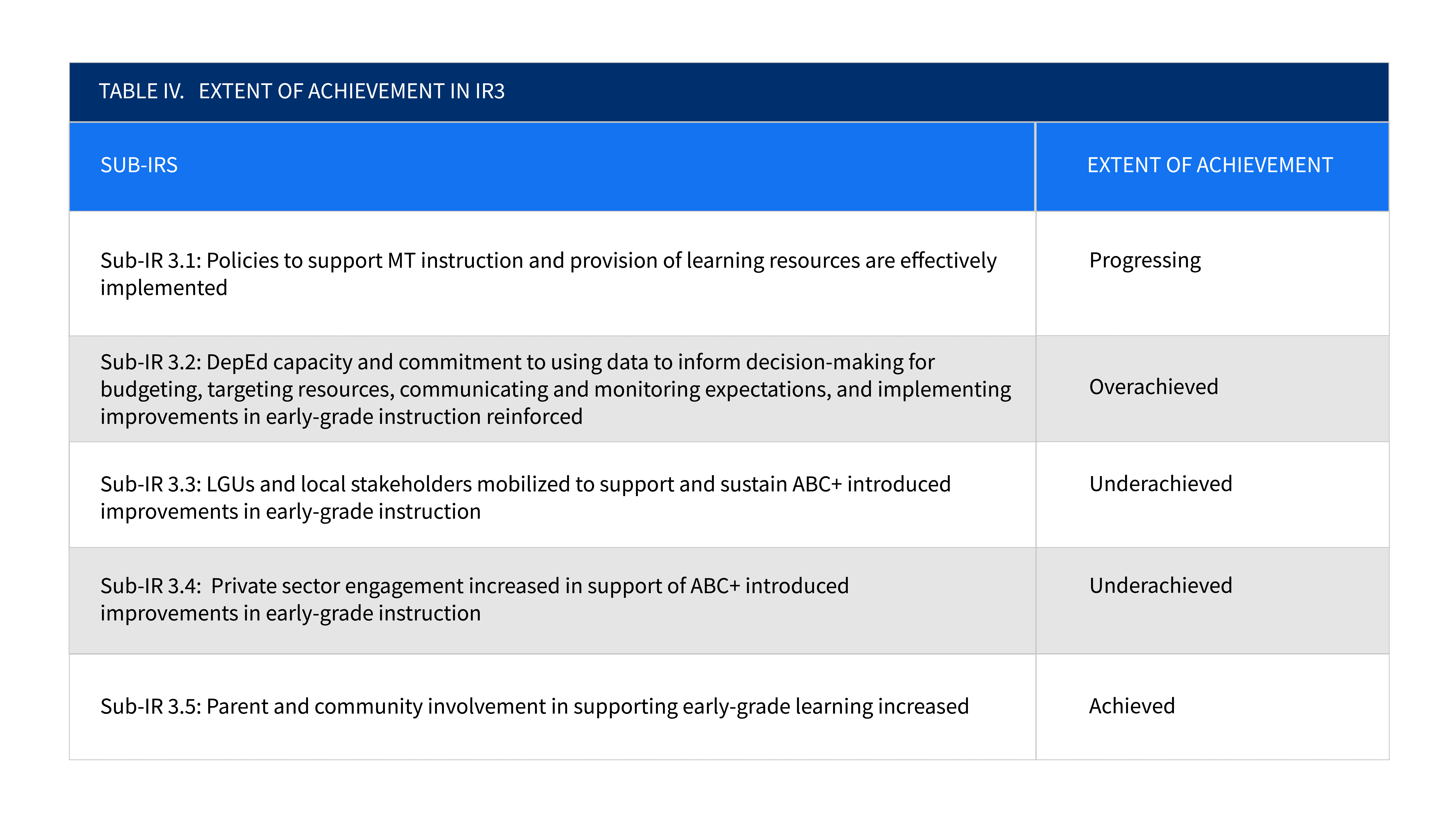




Program evaluation on effectiveness has three sub-questions. The results for two questions are presented here: one investigates which IRs contributed the most to the learning outcomes and the other looks at unintended outcomes brought by COVID-19.
Which of the three IRs contributed the most to improving EGR, math, and social and emotional skills for children in the early grades (kindergarten to Grade 3)? What were the explanatory factors, if any, for achievement, overachievement, and underachievement or non-achievement?
IR2 (provision of learning materials and resources) contributed the most to the access of quality materials to the EGR and SEL skills of children in grades K–3. IR2 has an estimated 75 percent progress achievement from the KPIs as it has the most significant outputs and outcomes achieved during the ABC+ implementation. Testimonials from interviews with key informants and FGDs with participants from varied backgrounds indicate 43 percent progress against its target. Accessible and quality materials as the output were effective in supporting the beginning reading skills of K–3 learners during remote learning. This ensured more opportunities to practice reading various reading titles. SRMs were produced in two languages: the children’s mother tongue and the Filipino language. Home learning partners and teachers whose mother tongue differs from the one used in the reading materials can still teach the learners because of its Filipino translations.
Qualitative data from KIIs also showed that learners benefited the most in this program (n = 55, 100 percent), which is connected to SRMs under IR2. An analysis of harvested outcomes also validates this. Results show that most outcomes about learners’ improved reading skills correspond to ABC+ interventions (Annex 7). For example, ABC+ activities such as the production of learning guides and SRMs, delivery of materials to schools and HLPs, books received by schools and HLPS, school heads training teachers on the development of SRMs, teachers trained how to conduct a proper read-aloud lesson, and most importantly the learning recovery plan contributed to the improved learning outcomes of K-3 learners. Specifically, the delay in reading abilities of K-3 learners was accelerated in the LRP of ABC+ and host regions. This is very evident in OH data of one teacher where learners were already observed reading out loud in the fifth week of the program instead of on its eighth week: “Nakikita na ang progress sa mga bata kahit five weeks pa lang. Kasi ito ay total ng eight weeks. Iyong nakakarecover, nakakapagbasa na. Nakakabasa na iyong umulit ng Grade 2 modular instruction.” (Even if we are only in the fifth week of the program, we can now observe the progress of learners. This [learning recovery plan] runs for eight weeks. Learners recover and can read texts. Those who were part of the modular instruction in Grade 2 and were not promoted to Grade 3 can now read in the classroom).
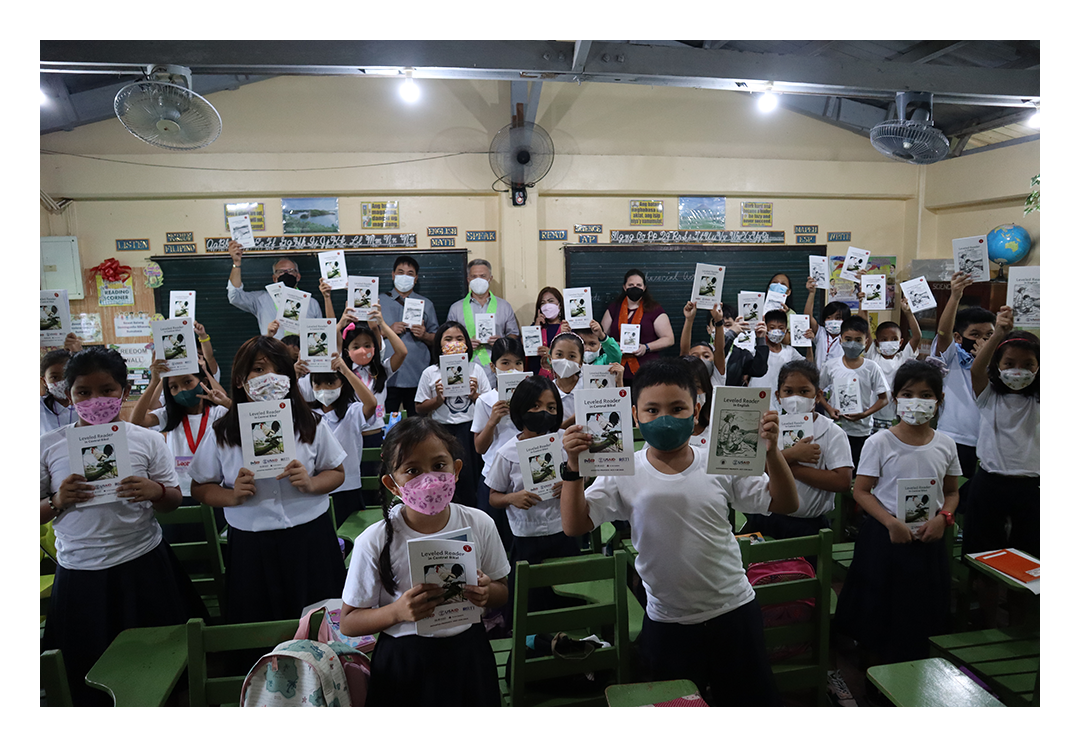




However, some challenges were observed. For instance, not all schools have sufficient library space to store some SRMs for classroom use, and some schools lack libraries. Many teachers constructed dedicated reading and numeracy corners in their classrooms. Classrooms, including libraries, are often prone to typhoons, floods, landslides, and fires. Given the limited capacity of teachers, school personnel, and most especially, limited Maintenance and Other Operating Expenses from DepEd, every school faces challenges in protecting and providing space to store SRMs properly.
Despite the challenges posed by the pandemic, the ABC + program remained effective in improving early-grade literacy and achieved its target outcomes.
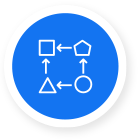
The program was highly responsive to the needs during implementation and adjusted its initial intervention plan to provide appropriate and relevant activities during the pandemic. These strategies were effective and useful to the target stakeholders, making the teachers’ “presence” felt in the learners’ homes. The Regional Director of DepEd Region V said, “Strategies formulated by ABC+ helped the region bridge the learning gap during the pandemic. The strategies such as blended learning, use of technology, and home learning guide for home learning platform were successfully applied amid the challenging situation”.
ABC+ materials enhanced the reading of learners, including their siblings. Initially, the goal was to produce and distribute 8,608,310 materials, but to date, 11,634,849 EGR materials have been made and distributed to K–3 learners. The principal of Montes II Elementary School of Iloilo City Division stated in her interview: “ABC+ materials are very timely during the pandemic, especially that we have distributed it to our children that helped and enhanced them in their readings not only to our learners but also to their brothers and sisters at home.”
n the FGDs, informants explained that ABC+’s SRMs contributed to literacy because they are in the local language, which parents could understand and explain to their children. The materials were also developed according to grade levels and were aligned with DepEd’s Most Essential Learning Competencies. Teachers reported that materials “strengthened children’s reading comprehension, widened their vocabulary, and developed their fluency.”
ABC+ also strives to complement the government’s policy direction and, to this end, complements program implementation with efforts to advocate for the program to LGUs/DepEd to generate ownership among stakeholders. At the Results Validation Workshop with DepEd, one informant said that the produced SRMs in the local language were very helpful in developing children’s reading skills that their school has decided that they will continue to use the SRMs even if DepEd had ordered the discontinuation of the teaching of the mother tongue as a language subject.

ABC+ strengthened the collaboration between home and school by engaging HLPs and community members to partake in the program. ABC+ also gained the DepEd’s trust in the process of program implementation. According to the DepEd Region VI Education Program Specialist, MTB- MLE and Filipino Coordinator-Curriculum and Learning Management Division Regional Office, “ABC+ is facilitative and collaborative. They provided budget support and training and also selected the right people to partner with us. Hence, despite the pandemic, ABC+ still achieved its outcomes. ABC+ has gained the full support of the leaders in the regions.”

Consistent program monitoring at all levels ensured that activities were on track and the program delivered its outputs. While in the middle of the pandemic, the program shifted to utilizing online platforms to achieve its objectives. “Even during the pandemic, ABC+ is still highly effective because of the dedication and hard work of the project staff of ABC+. They were persistent in following up/monitoring. They won’t stop until work is done,” according to a Roxas City Focal Person.
With the return of in-person activities, program effectiveness should continue relatively quickly. The Schools Division Superintendent of Maguindanao II Division thought they should “only rate four out of five on the effectiveness since the implementation is still halfway.”
Similarly, according to the Assistant Schools Division Superintendent, Special Geographic Area Division, MBHTE of BARMM, “Strategies must be implemented in a F2F setting. If you want to see the effectiveness of the strategies, it should be done face-to-face. Some strategies require a teacher knowledgeable on how to conduct the activity.”
Have there been any outcomes brought by COVID-19 in implementing ABC+ that would tell us whether the program improved early-grade instruction and delivery, improved access to quality materials, and improved education capacity and commitment to manage and implement interventions supporting early-grade instruction?
There are two parts to the section of this sub-question. First are the results of outcomes harvested from evaluation participants, and the second is the selected most significant change story.
The OH method defines an outcome as a change in an individual, group, community, organization, or institution’s behavior, relationships, actions, activities, policies, or practices. It could also be an unexpected or unintended demonstrated change in awareness, knowledge, or skills, collaborative effort, or the use of knowledge or innovative solutions. Outcomes might also describe unexpected or unintentional, more profound institutional changes relating to policy, citizen engagement, government accountability, and organizational arrangements. The evaluation team asked key informants and FGD participants to describe what they perceived as the outcomes for each IR and ABC+’s contributions. Since ABC+ is only approaching its fourth year, the OH focused only on the project’s processes and how they affected its inputs and outputs.
Figure 2 presents the harvested outcomes associated with the three IRs. These outcomes include intended and unintended outcomes expressed by the participants during the OH and MSCT workshops.





Figure 2 shows that the harvested intended outcomes in IR1 are increased teaching efficacy, increased capacity to teach, increased appreciation of teachers’ role in beginning reading, and developed precision in identifying specific learner support in reading. This can be attributed to the various teacher training that ABC+ delivered to the recipient schools across covered regions, cultivating confidence, competencies, and strategies among teachers in teaching literacy to K–3 learners.
One of the FGD participants praised the quality of the program’s materials and training: “The materials distributed to the school were beneficial in teaching reading, especially the picture book for the kinder. The teachers benefited from the training. They were refreshed with the strategies and techniques in teaching reading.”
In IR2, the evaluation team confirmed four intended outcomes: learners’ increased love for reading, an adaptation of ABC+ instructional and home learning strategies, teachers’ increased capacity in curriculum development, and cognitively aligned reading materials. This supports ABC+’s provision of contextualized and developmentally appropriate SRMs to K–3 learners (access and use of materials), capacitation of HLPs (training of parents and guardians on how to teach their children at home), and capacitation of teachers (training, workshops, and monitoring).
In IR3, the harvested intended outcomes are improved capacity at the school level, parental support in reading, and a whole community approach to beginning reading. The harvested outcomes can be attributed to the expressed support and involvement of various stakeholders, awareness, and capacity building of parents and other community members in reading practice, the commitment of multiple stakeholders to monitoring, and the support of the ABC+ program to DepEd policy.
Two significant unintended outcomes emerged towards the end of PY3. These are improved criteria for teachers’ competence (IR1) and the learning recovery curriculum (IR3).
Improved teacher competence was not brought about by the pandemic but was a positive outcome. The development of MTB-MLE-based instructional materials was added as a criterion for K–3 teachers’ competency for professional promotion. ABC+’s materials workshops helped regional DepEd leadership realize the importance of materials development and the corresponding value of capacitating teachers. Teachers can earn a professional promotion by being involved in developing or producing MTB-MLE instructional materials. A materials development focal person reported this as a welcome recognition of their efforts and an additional motivation to keep producing leveled local SRMs.



The strategies at the K–3 level of the learning recovery plan developed and initiated by DepEd Region V were influenced by instructional practices that ABC+ introduced during teacher training 1 and 2. As a partner of DepEd Region V, ABC+ provided critical technical inputs to the region’s learning recovery plan and program, also known as the Recovering for Academic Achievement by Improving Instruction through Sustainable Evidence-based learning (RAISE) program. Part of the RAISE plan was to start the school year with an eight-week learning recovery curriculum, focused solely on directly supporting learning remediation and intervention on literacy and numeracy for Grades 1–3. ABC+ developed the assessment tools and capacity building for teachers using the said tools.
These two unintended and significant outcomes ensure that the outcomes outlined in the theory of change will be fully achieved in two years because they are integrated into the host institutions’ policies and are connected to the ABC+ program.

One of the intended outcomes of ABC+ is the whole community approach (upper portion of IR3). This outcome connects to the emerging most meaningful change story that underwent three selection levels, titled “Nothing is Impossible for the Learning of Children” by a Master Teacher from Region V.
The story was chosen because it illustrates the classic adage, “It takes a village to raise a child.” The story cuts across the intermediate results (IRs) of ABC+ and captures all its goals. The story was about reading materials and, just as equally, about training and systems ability.
It tells the story of a teacher empowered by ABC+ training. The teacher extended her initiative to develop children’s literacy by becoming an advocate and engaging the community to launch a literacy project during the pandemic. According to one story selector, “It is a complete story since it captures several activities…it captures what has been happening on the ground, it captures the series of pivots and innovations, and it is the story of the two years of learning during the pandemic” and, ultimately, presents the fruit of the activity (see Annex 22 for the actual story).
Analysis showed that ABC+ influences the story because of the training received by the teacher. Two levels of program recipients were seen, the individual (teacher) and the community. Also, there are two types of changes (outcomes). These are changes in behavior (an initiative of the teacher) and changes in the community’s activity (provision for learning home library).
In summary, although ABC+ activities underwent several pivots, most harvested outcomes were aligned with the intended outcomes outlined in the theory of change. And as planned, these contributed to early-grade instruction.
How has ABC+ contributed to enhancing policies on EGR instruction and learning outcomes in kindergarten to Grade 3?
ABC+ enhanced three types of policies: 1) strengthening data-driven planning and investment programming through strengthening the assessment systems for Grade 1–3 learners, 2) multi-stakeholder sectoral planning to improve education financing for early-grade learning, and 3) contextualization of policy.
ABC+’s introduction/co-development of the Comprehensive Rapid Learning Assessment (CRLA) tools with DepEd Region V, VI and selected Maguindanawan-speaking districts in BARMM paved the way to creating a systematic data dashboard that enabled the teachers to quickly identify learners who are eligible to undergo designed remedial intervention strategies based on their learning needs.
Region V has begun incorporating CRLA results as one of the key performance indicators in their quarterly Monitoring and Evaluation sessions. In Region VI, CRLA was instrumental in profiling learners and data-driven interventions. According to Region VI Focal Person, non-readers in Filipino and English languages decreased – “Profiling of learners to make materials and training for teachers suited to students were created from the CRLA. Non-Filipino readers dropped from 34.3 percent to 11 percent, and non-English readers dropped from 14.8 percent to 6.6 percent.”
Schools then continued bridging the learning gaps by maximizing CRLA results in formulating plans and activities even after concluding the 8-week DepEd Regions V and VI curriculum. status of K

CRLA has proven effective in reporting class, school, and regional data on the status of K-3 reading skills. It allows educators to identify children’s reading levels and inform instructional decisions and interventions quickly and easily.
One of the key benefits of CRLA is its effectiveness in reporting data at various levels. For example, a teacher can determine her students’ reading levels at the beginning of the school year. This data can then be aggregated to provide a picture of the reading skills of the entire class. Similarly, data from multiple classes can be combined to provide an overview of the reading skills of an entire school. This data can then inform decisions about curriculum, instructional strategies, and interventions. Data are also collected mid and the end of the school year. This provides information on the progress of reading skills of K-3 learners based on the visualized data.
Another benefit of CRLA is the ease with which data can be visualized. It collects and analyzes data, displaying the results in an easy-to-understand format. This makes it easy for educators, administrators, and policymakers to quickly identify trends and patterns in the data at division and regional levels.
The most significant benefit of CRLA is its scalability. It is technology-based and uses Looker Studio, which can be availed for free via a web browser (Google Chrome). Hands-on training related to its use is easy to learn by teachers, supervisors, and regional coordinators.
ABC+ introduced a model for sub-sector planning called the multi-stakeholder local education sectoral mechanism (ESM). ESM was designed to strengthen the existing policies and practices relating to decentralized planning and financing for early-grade education by LGUs and DepEd regions and division offices. ABC+ introduced a structured, standardized process and tools/rubrics for determining the gaps along the three areas of access, quality, and governance and facilitated the prioritization of programs, projects, and activities (PPAs).
Some of these priority PPAs were considered in the LGUs’ Executive-Legislative Agenda and School Education Fund, thus contributing to improving learning outcomes and strengthening the link between DepEd and LGUs. These DepEd and LGU partners include those in Tabaco City, Legazpi City, Negros Occidental, Antique, Capiz, and Sorsogon.
Regions contextualized the National Policy on Bawat Bata Bumabasa (3 Bs) by localizing the 3Bs in their policy/program. To date:
The National Memorandum prompted the contextualization of policies that established a standard school-based reading program that responds to improving learners’ reading challenges. Region 5 ABC+ Focal Person explained: “In Region V, we created 5Bs or the Bawat Batang Bikolano Bihasang Bumasa (Every Bikolano Child Reads Very Well), before the pandemic, to respond to 3Bs with a focus to establish standards for schools for implementation of school-based programs in implementing the reading program.”

ABC+ uses a whole community approach to the early-grade instruction ecosystem. This approach added three micro-ecosystems: teacher education institutions, local government units, and home learning partners. In this ecosystem, the roles of this micro-ecosystem became explicit in ABC+. For example, in teacher education institutions, the courses offered did not have existing modules for their pre-service teachers. ABC+ helped the faculty in charge of courses write and produce the Beginning Reading and Literacy Development modules. The home learning partners were guided on how to use the home learning modules for K–3 learners. A case study in Albay Central School describes this whole community approach.
Additionally, ABC+ used core elements—the 5Ts of Teach, Time, Text, Tongue, and Test—found to improve early-grade literacy instruction and learner outcomes. These provide structure to this reading intervention and ensure the approach is inclusive.
During the complex pandemic context, ABC+ effectively used 3Ts: Text (SRMs), Tongue (mother tongue-based materials), and Test, which supported incremental progress for K–3 learners.
For teachers and school heads, the training component, which is the teaching part of the model, deepened pedagogical knowledge and increased teaching efficacy about MT as a separate subject.
Classroom observations on how teachers apply skills from the training to help learners read have yet to be possible due to the pandemic and remain an urgent concern for the full achievement of the program goal.
The last T – Test – has a significant contribution as well but must be fully understood by the entire system using the suggested approach of the evaluation team – the use of 3Ds (Data, Discourse, and Design). Data should be continuously generated via tests, discourses on the implication of the data should happen at all levels, from regional to classroom levels, and design how resources (e.g., human, financial) may be used to improve EGR.

In 2019, ABC+ was introduced to Region V and Region VI and selected the Maguindanawan-speaking district in BARMM. The program, primarily in partnership with the DepEd, aims to improve basic literacy skills in the early grades (K–3), focusing on three IRs: IR 1: Improve early-grade instruction and delivery systems, IR 2: Increase access to quality, leveled, locally developed supplementary reading materials to support early literacy, and IR 3: Support the enabling environment by improving education system capacity and commitment to manage and implement interventions supporting effective early-grade instruction.
The alignment of the ABC+ program to the DepEd policies proved mutually reinforcing, providing credibility to the various program activities, which optimized the implementation of the existing DepEd policies on literacy, specifically in the native language. The national memorandum on 3Bs, Bawat Bata Bumabasa, was contextualized by Region V into 5Bs (Bawat Batang Bikolano Bihasang Bumasa) along with the implementation of the eight-week learning recovery program to address learning losses. As soon as Region V adopted the ABC+ program, many schools immediately implemented and supported it, including Albay Central School (ACS), one of the pioneer schools under the Legazpi City Division. ACS is currently notable for its exemplary performance across the three IRs.
The Training of Trainers (TOT) and teacher training designed by ABC+, DepEd, and the National Educators’ Academy of the Philippines strengthen teaching skills and strategies on how to teach the mother tongue to early grades. The need for teacher training emanated from research-based data and assessments. Teachers diligently adopted the teaching strategies and teaching processes, including integrating gender equality and social inclusion, and social-emotional learning. During the COVID-19 pandemic, they learned how to utilize and navigate different platforms and made the teaching-learning experience more fun and effective amidst the pandemic. The skilled trainers or the TOT inspired and motivated teachers to perform and show their commitment to improving their teaching. In addition, the schoolteachers were also trained to utilize their dashboard to conduct systematic assessments using the Comprehensive Rapid Literacy Assessment, which then served as their basis for data-driven interventions.
ABC+ provided supplementary reading materials (SRMs) to support early-grade literacy (i.e., wordless, decodable, and leveled readers in English, Filipino, and MT small and big books) for K–3 learners. With the support of the barangay and volunteer parents, ACS was able to collaborate and orient the six catchment barangays to the program and distribute SRMs. While one barangay among the six catchment areas could put up a community learning hub, others established reading centers, which benefited not only the learners but also illiterate community members. “The reading materials provided by ABC+ enhanced their interest in reading, which made it easier for the kids to understand the lessons,” a parent explained.
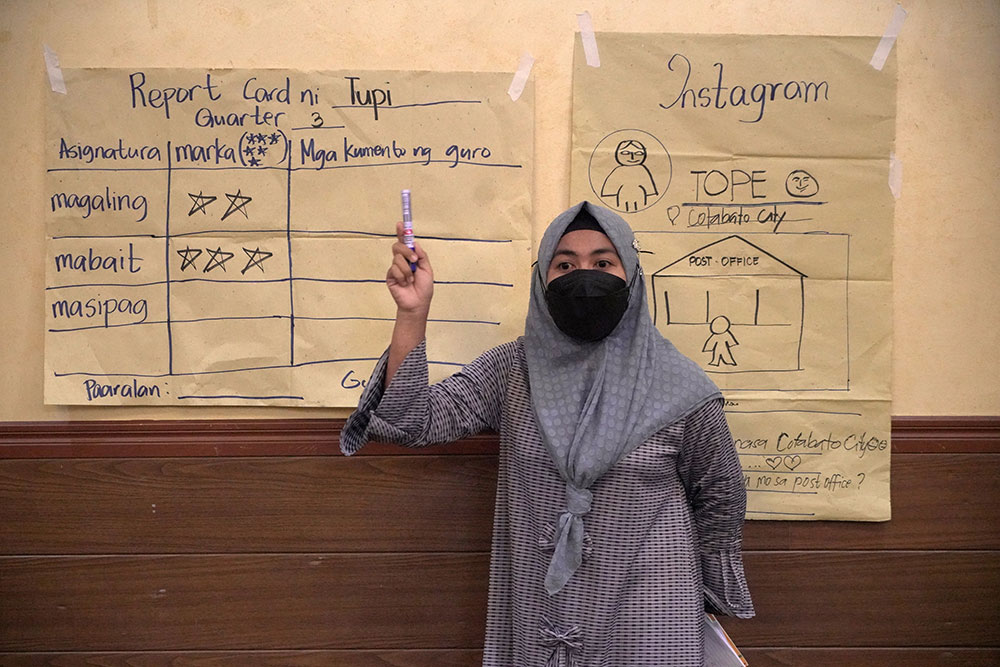
Some teachers and parents encountered difficulties translating mother tongue words due to multiple variations of the Bikol language. Some K–3 teachers lacked confidence due to their infrequent use of Filipino and English. A supervisor-teacher-parent support system was developed through the virtual platform to support them. School coordinators became more responsive to the needs of the teachers and students in implementing Mother Tongue-Based Multilingual Education. The intensified monitoring was also vital in ensuring that activities were on track and facilitating proper rollout to the target partners/participants.
ABC+ and the ACS principal and teachers engaged the community, including home learning partners, municipal/barangay LGUs, and non-government and government organizations, to improve early-grade literacy despite the school closure. Education partners were able to augment educational resources during the implementation of the program by reproducing and distributing SRMs.
In addition, the LGU of Legazpi City leveraged support through the School Education Fund. With the help of ABC+ and the collaboration with DepEd and other stakeholders, the whole of community approach successfully promoted early-grade literacy. ABC+’s support system played a significant role in improvements in early-grade literacy. The region regarded the ABC+ program as highly responsive to the educational challenges brought by the pandemic, and DepEd Region V was, therefore, very supportive and committed to sustaining what ABC+ started.




Following the evaluation criteria on effectiveness, the emerging key message in this evaluation parameter is that even in the context of the pandemic, ABC+ used an agile program model, which allowed for positive results. It quickly adjusted to ensure that intended outputs and outcomes will be achieved. Although some activities were delivered in an alternative format, there is still fidelity to the program design. Outcomes of ABC+ are starting to surface incrementally, especially since face-to-face classes are now in full swing.
ABC+ activities on professional development for teachers, school heads, and supervisors, production, and access of quality SRMs that can be publicly shared, and technical assistance on the learning recovery plan were instrumental in catching up with the reading delays of K-3 learners brought about by the pandemic. The ABC+ efforts on the DepEd system’s capacity to strengthen the use of assessment data are very helpful in monitoring children’s reading outcomes.
On the effectiveness of capacity development for teachers, school heads, and supervisors and the effect of SRMs on improving reading of learners in their mother tongue, Filipino, and even in the English language, the following recommendations are addressed to ABC+, DepEd-Regional and Division Office, National Educators Academy of the Philippines (NEAP), and the LGU:
On the contribution of the learning recovery plan as the unintended outcome:
On enhanced policies on curriculum development and assessment at the K–3 levels, the evaluation team recommends that ABC+ help regions disseminate ideas to strengthen or contextualize national or regional policies that ABC+ already supports. Data revealed that due to partner schools’ confidence in ABC+ support, some regional policies that involved only literacy had been expanded by partners to include numeracy. Some policies were also enhanced in terms of budget allocation. Processes for initiating these local policy enhancements can be shared with other regions through fora or meetings so that other regions can also identify local policies that can be enhanced or further contextualized.